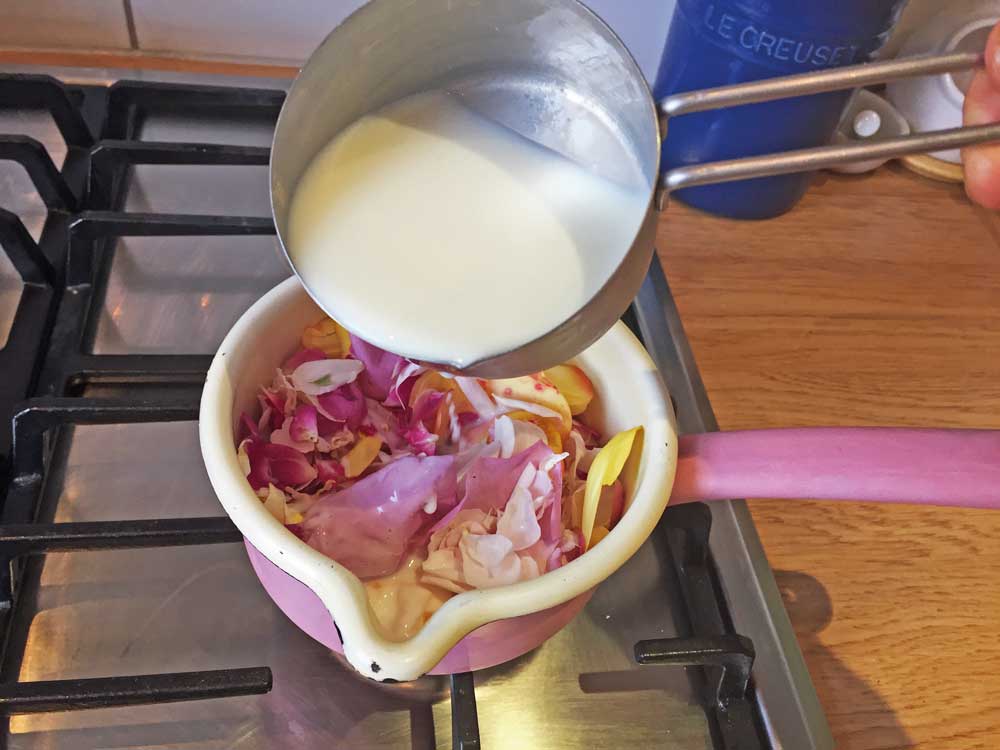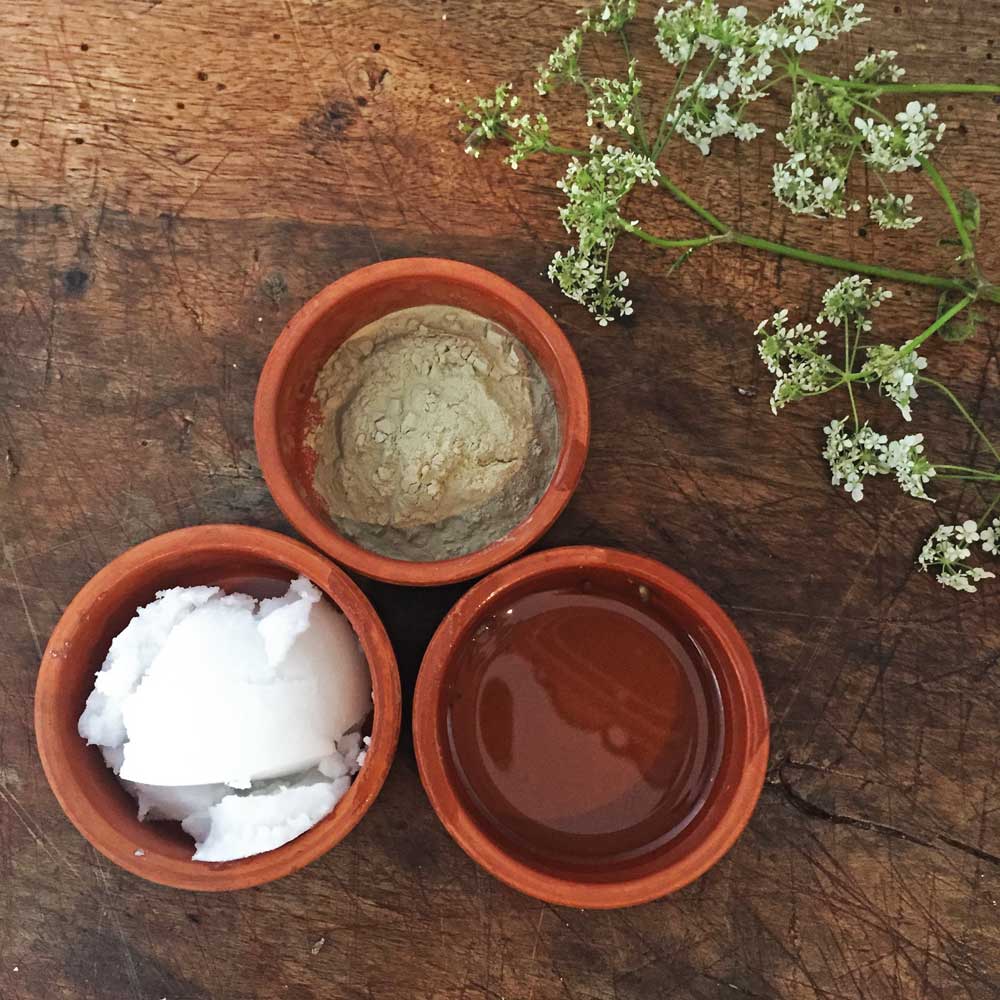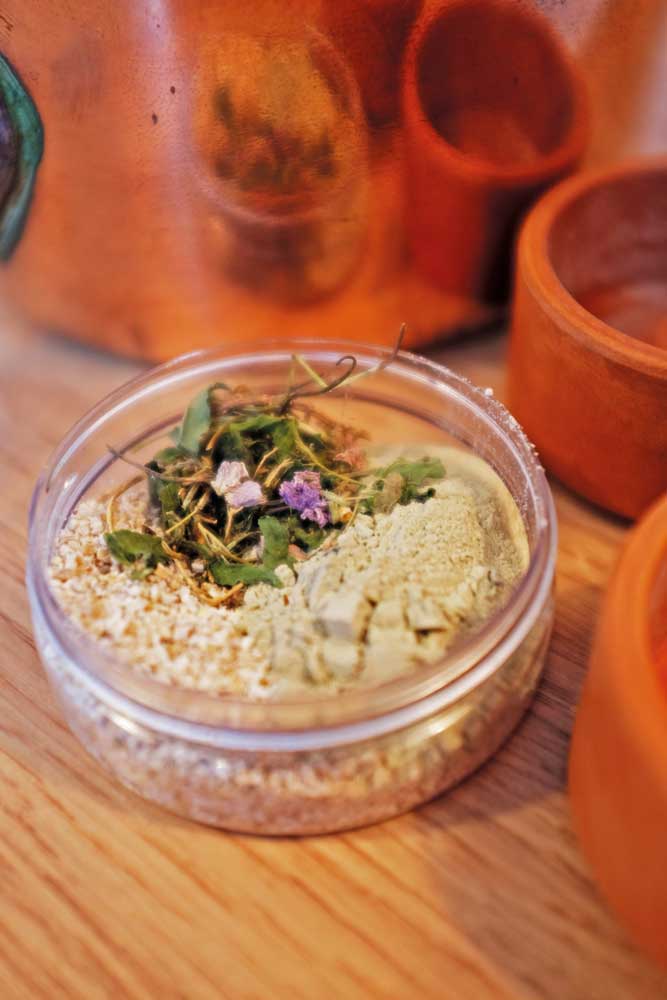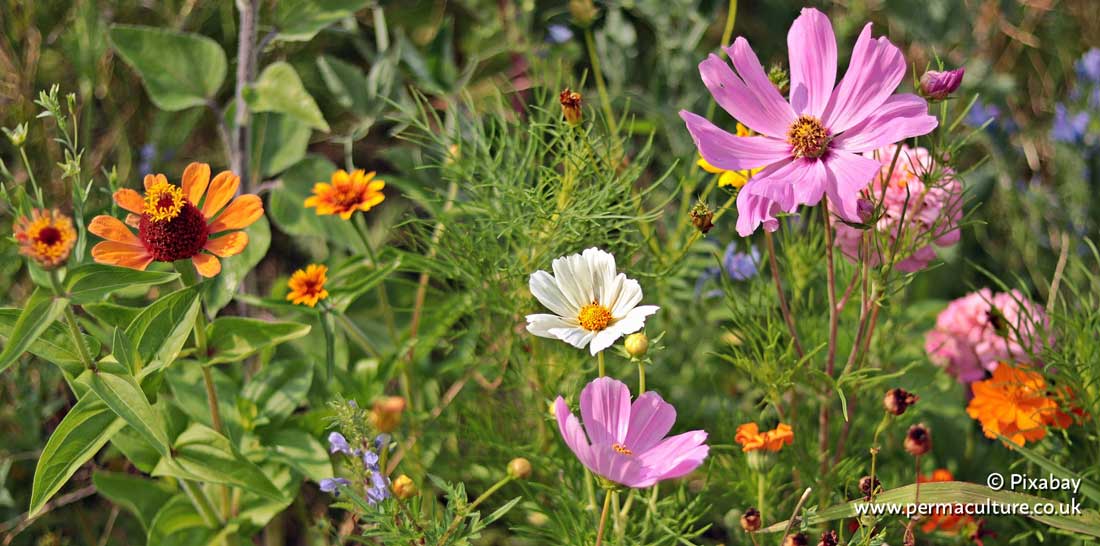Natural cleansers remove the daily build-up of dirt, grime and old cells from our skin. The best cleansers work alongside natural processes to do this, and enable our skin to perform at its best. It’s a complex job with chemical and physical processes working together. A cleanser needs to be active enough to loosen dirt from pores; but still gentle enough to be used frequently without upsetting the delicate balance of our skin.
During the day, we emit sweat (with all its salts) and sebum. This coats our skin and can block our pores. It’s also like a magnet to all the dirt particles in the air that will cling to our skin. This debris builds up, along with the products we add ourselves: from creams and deodorants to sprays and make up. The more we put on our skin, the more effort we should take to remove it. And the more polluted the environment we live in, the more attention we should pay to cleansing, even double-cleansing.
The better you cleanse your skin, the healthier it can be and the more effective whatever you put on top (your moisturisers, sun protection or makeup) can be. Your natural cleanser is therefore the most important thing in your skincare repertoire. It may only be on your skin for a short while, but its impact is great. With a little thought, the effort you put into cleansing can also provide nourishment, protection and support to your skin. It’s something you do every day so it’s worth taking a bit of time to understand what’s involved and to make sure you’re doing it right.
Factors to consider in choosing your cleansing products are:
Good cleansing requires both oil and water, so typically cleansers contain both.
Oil is critical as it combines with grease on the skin to dissolve it; water can’t mix with oil in this way. Water is needed to dissolve dust and salts and wash away the loosened dirt and oil.
It is possible to clean with just oil – wiping it on and off again, taking the surface oils and dirt with it. However it’s not possible to clean effectively with just water as it will not combine with the oils and lift them.
In a ‘keep it simple’ approach to skincare, oil cleansing can be one of the easiest approaches, especially if you want to make your own products. As this is now a ‘trend’ in skincare, a plethora of advice and techniques for it can be found online, but really it can be very straightforward.
Breakouts are often blamed on oily skin, making people nervous to use oil in cleansing. In reality, oil-free cleansers are potentially doing harm by stripping skin of its natural oils (which only encourages it to produce more). Using good, natural, plant-based oils in our cleansers can nourish skin and help it stay balanced. They can add antioxidants (to help combat signs of ageing) and vitamins; plus create even tone and smooth skin.
Oil cleansing is great for dry skin, but also perfectly good for oily skin (just use ‘drier’, less fatty oils).
There is a psychological benefit to the fresh feeling we get from splashing water on our skin. We hold deep associations between water and cleansing: washing away. To be able to swoosh our dirt down the plug hole, we need to bring water into our cleansing products.
Oil and water cleansers will typically take the form of either a lotion (more water than oil) or a cream (more oil than water). A lotion is quicker to apply and splash off and can feel very refreshing; a cream takes more care and attention, especially to remove but it can clean deeper and also provide nourishment to the skin more effectively than a lotion. My preference is to use a quick fix, wake-up lotion in the morning and a gentle, calming cream in the evening.
Bringing water into our cleanser blends throws up two very important requirements:
1. Mastering the art of creating a stable emulsion, i.e. getting the oil and water to mix together.
A cleanser based on an emulsion has the benefit of both oil and water, a powerful duo. The closer a cleanser is to your own hydro-lipo (water-oil) balance, the more effective it is likely to be for you, which is one of the reasons cleansing is such a personal thing.
2. Protecting your product from mould and bacteria, which will form in just a few days in any product containing water.
There is advice on how to achieve each of these in Chapter 12 where we look at the chemistry of making skincare products, but here are a few simple approaches for freshly made cleansers combining oil and water.
Milk is nature’s perfect oil-in-water emulsion. It contains lactic acid that gently dissolves away dead cells and maintains natural pH, which makes cleansing milks a great quick-fix. You can use whatever milk you have in the fridge, purchase a particular milk for your skincare or make your own kinds of milks, such as rice milk, almond milk or buttermilk. Use the different milks interchangeably in the recipes to suit you. Typically, the oilier your skin the oilier the milk you should look for, which is why cream and buttermilk are great for oily skins while almond or skimmed milks can work well for drier skins.
The simplest cleansing lotion can be made by steeping your favourite flower petals, or herb to suit your skin, in a little milk.
Overleaf are some examples of milk and herb combinations to suit how your skin feels.

Almond milk cleanser for tired skin
To make your almond milk:
Put 50g ground almonds into a muslin bag, then place this into a bowl and pour over 150ml water.
Leave it to soak for a couple of hours, pressing occasionally with a spoon.
Lift the bag out of the water and squeeze dry. The liquid you now have is your almond milk.
(You can use the bag in the bath for scrubbing.)
Good herbs to include for tired skin: Lemon balm, spearmint.
Oat milk cleanser for sensitive skin
To make your oat milk:
Soak a cup (225g) of oats in water for at least 30 minutes (you can leave them overnight). Drain these, discarding the water and rinse them. Put the soaked oats in a blender with 4 cups (948ml) of clean water and blitz. Strain the liquid through a muslin cloth and you have your oat milk.
(You guessed it, the muslin full of squidgy oats can be tied – throwing in a few herbs while you’re at it – and used in the bath. Alternatively, you can add the oats to a flapjack recipe, crumble topping or blend them into a smoothie.)
Good herbs to include for sensitive skin: calendula, evening primrose, rose.
Buttermilk cleanser for oily skin
Buttermilk is the by-product of turning cream into butter. To make your own:
Take a large carton of fresh double cream and empty it into a bowl. Use a hand blender to whisk the cream, taking it beyond stiff whipped cream to curdling, and keep whisking. Solid clumps will form, which are butter. Once you can clearly distinguish the solid from the liquid, take out the butter and you’re left with the buttermilk.
(You’ll want to enjoy the creamiest, freshest butter, so continue preparing this by washing it in cold water. Continually replenish the water until it runs clear, then your butter is ready to form into pats. You can add salt if you choose. If you’ve made more than you need, you can freeze it.)
Good herbs to include for oily skin: Peppermint, sage, yarrow, nettle.
A ‘cheat’ approach to creating an oil and water blend is to cause enough friction by bashing the oil and water molecules together to temporarily combine them. The ‘emulsion’ you create will not be very strong, and you’ll soon see the oil and water separating again, but it’s handy for products you make quickly.
Use an oil with high lecithin content, such as sunflower or thistle oil, as this will help the emulsification.
Any of the cleansing milks above can be made with added oils. Add a tablespoon (15ml) of oil to one cup (237ml) of infused milk.
Cream cleansers are beautifully nourishing to use. When making your own, unless you want to include preservatives, make in very small quantities that you can use within a week or so.
Foaming is not a necessary part of cleansing, but bubbles can play their part in encasing dirt to be washed away. To be effective the bubbles should be large enough to be able to grab hold of dirt, but not so large that they burst before being washed away (which would result in the dirt being dumped back on your skin). It’s this delicate balance that makes foaming products tricky to make, and leads commercial manufacturers to often rely on sodium lauryl sulphates (SLSs), a known irritant which many people try to avoid in skincare.
If you enjoy the foamy feel, the simplest way to achieve it in your own products is by blending liquid castile soap with your skin loving oils. Here’s a recipe you can try. Like the shake-it-up lotions it will separate in the bottle and need shaking before use. Keeping it in a pump-action dispenser is ideal (you can buy these online, or clean and reuse an old one). This is quite a concentrated recipe, so a little goes a long way. Don’t keep this for more than a couple of weeks; discard and make fresh supplies.
Making fresh skincare is a wonderful way to continually flex your products to suit your skin, but sometimes even the simplest recipes are difficult to achieve within a busy life, or when we’re away from home.
A simple, long-lasting, easy-to-transport option for cleansing is a good, classic bar of soap. So why is it no longer our go-to cleanser? Soap has received bad press as it’s considered to be drying, stripping the natural oils from our skin. You won’t be surprised to know that this depends on the ingredients in the soap. While it’s true that many of the soaps commonly available today have a list of harsh ingredients, soap itself, when made with good, enhancing ingredients, based on plant oils, can be a wonderful way to cleanse.
One of the major advantages of soap is its stability. A well made, patiently cured bar of soap can last for months in active use and is so easy to use, store and transport. There is a reason soap has endured for centuries – it works.
Clay is fantastic for your skin. It is healing, cleansing and refreshing. Clay can draw out impurities and toxins through adsorption (its ability to attract impurities and toxins due to its electro negative charge) and hold them through absorption (the ability to penetrate a liquid or solid and form a transitional zone) so when we take the clay away, it takes the impurities and toxins with it.
This makes clay a wonderful ingredient for cleansing. It can be used on its own (mixed into a paste with water, infusions or oils) or incorporated into other products such as soaps, shampoos and cleansers, where it may be blended with herbs, fruit or vegetable juice, extracts or plant oils.
There are many different clays, from all over the world. They form where there has been volcanic activity and the local conditions affect the properties and mineral composition of the clay. This means there are great clays for every skin type and condition, many benefits that can be derived and many applications
they can be put to.
Some clays, such as bentonite, have antibacterial properties making them great for acne-prone skin. Green clay is good for oily skin, while white clay (also called kaolin) is very gentle and suitable for sensitive, dry and mature skin. Pink clays can also be used on sensitive skin while red clays are good for facials as an efficient purifying mask. Normal and oily skin is good with yellow or green clays (which have stronger absorption qualities). French green clay is particularly absorbing and has a good, fine texture for use on the face. Mature skin also benefits from French green clay as it tightens pores, boosts circulation, reduces inflammation and evens skin tone.
Medically clay is antiseptic, anti-inflammatory and can promote healing. Cosmetically clay is an emollient, softening and soothing for the skin, and improves skin’s texture. It’s also a refrigerant, cooling and reducing body heat.
Clays are only active when wet which means they store well, but need to be kept moist while on your skin. You can manage this by spritzing with hydrating toners.
When working with clays, don’t use metal containers or utensils; instead use glass, plastic or wood.

Ready-made clay cleansers are starting to appear on the market as ‘cleansing powders’. They might have a combination of ingredients including powdered aloe, rice bran, pulverised pearls, and other earth ingredients, including herbs, salts and spices, but many are simple one-ingredient formulas: e.g. just Moroccan clay. These make versatile cleansers, and many of them are gentle enough to use daily.
They’re simple to use as you can blend them in your palm: put a teaspoonful of the powder in your hand and then add a few drops of warm water before rubbing your palms together. You can keep adding drops of water until it feels right, and you’ll soon figure out how you like it and you can vary it by incorporating more water on days when cleansing is all you need, less water for a grainier product
on days when your skin could benefit from exfoliation as you cleanse.
For an even gentler and skin-feeding cleanser, you can add a drop
or two of oil in with your paste.
A lovely way to combine oil and clay cleansing in
a simple, easy-to-travel-with form.
Good for dry skin in particular, oats are a great alternative to soap. They are also helpful for those prone to acne. With their anti-inflammatory nature, oats are good if you suffer from redness or sore, irritable skin.
Here are two different cleansers made by combining oats with other dry ingredients. They’re very simple to make and, because you only add water as you use them, you can make them in bulk and store them dry.

Cleansing masks are a relaxing way to gently draw impurities from your skin. It’s worth giving over half an hour of your life at least once a month to relax and let the power of herbs do their work. We’ve already looked at clay masks, but there are a few other ways to benefit from an intense mask treatment using herbs.
Steam cleansing is an ancient means to really open up pores and enable all dirt and grease to be dislodged and removed.
Steaming isn’t recommended if you have thread veins.
Earlier we recognised that you can’t clean with water alone. However, cleansing waters have become popular recently, often marketed as micellar waters. These are not really new products, they were available before we had in-house plumbing, but they’ve become popular again as an all-in-one cleanser, makeup remover and moisturiser. Really useful when you haven’t got access to water, such as when travelling or camping.
What makes these waters special is the addition of tiny balls (micelles) of oil. They also use very pure water and often have other supporting ingredients. The overall effect is a product that looks and behaves like water, but feels more velvety. It is very simple to make a basic cleansing water yourself. Create just a small amount and refresh every few days.
—
This is an extract from Laura Pardoe’s Vital Skincare: Natural Healthy Skin in Just 5 Minutes a Day. Chapters include:
More from Laura: Watch: Make your own natural skincare
Laura is a plantswoman and natural skincare formulator. Now living in the Cotswolds, her time is shared between family, hedgerows, garden, workshops, desk and lab as she blends traditional and modern approaches to bring the skincare benefits of temperate plants to all.











